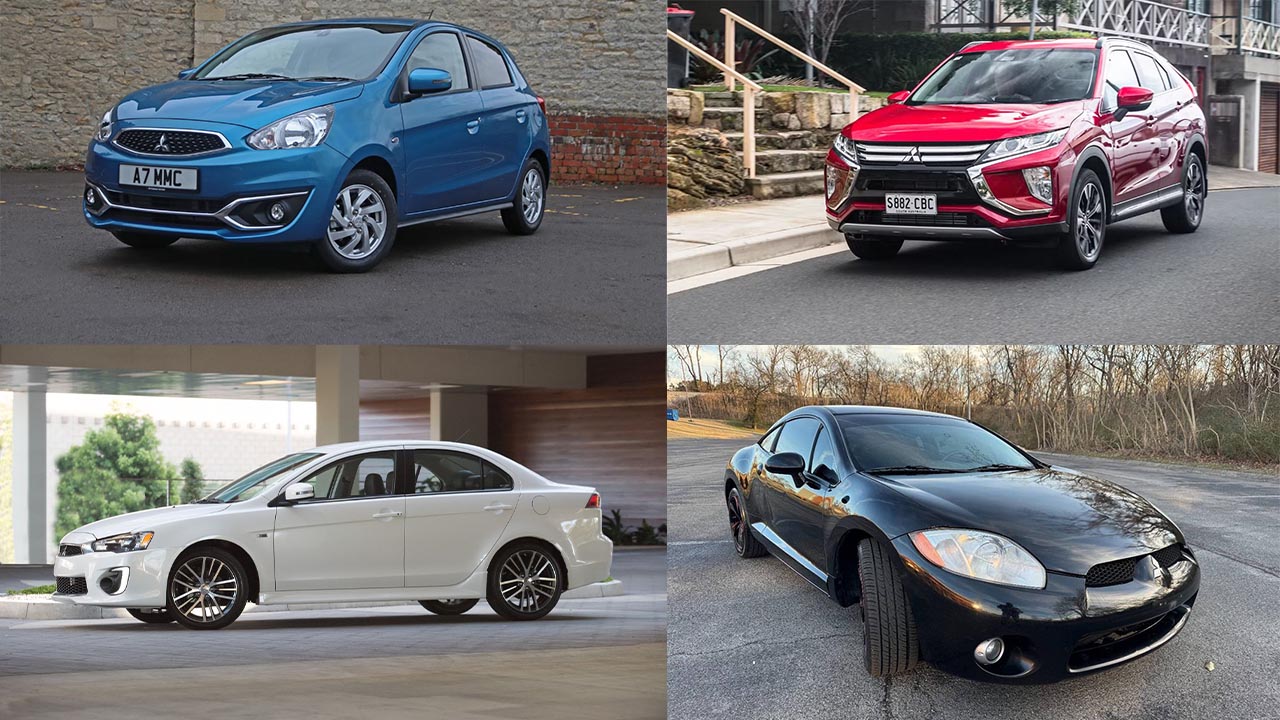Just like comparing athletes from different generations, evaluating vehicles from different eras can be incredibly difficult.
Think Arnold Palmer versus Tiger Woods, Steffi Graf versus Serena Williams, or Pele versus Messi. These days, we do have more comprehensive data when it comes to breakdowns and repairs, but manufacturers often keep those numbers close to the chest.
Mitsubishi, a Japanese automaker founded in 1870, is part of the Mitsubishi Group and the broader Renault-Nissan-Mitsubishi Alliance.
While Mitsubishi Motors officially began producing passenger vehicles in 1917 with the Mitsubishi Model-A, the company made its mark building rugged off-roaders like the Pajero.
It also established a strong reputation in motorsport, with the Lancer Evolution making waves in WRC and the Pajero Evolution earning multiple victories in the Dakar Rally. Mitsubishi’s most successful year in the U.S. market was 2002, when the company sold 345,915 cars.
What makes these comparisons even harder is the sheer subjectivity of it all. Die-hard fans will argue endlessly that their older model is better than a newer version with the same badge.
There’s no definitive answer, and no one ever really wins those debates. Still, we’ve compiled a list of some of Mitsubishi’s top models throughout the years.
The brand isn’t widely recognized for its reliability and tends to land in the middle of the pack when compared to its peers. However, that doesn’t mean Mitsubishi hasn’t delivered some standout vehicles.
Any list like this is bound to be divisive. But this isn’t about ranking the most reliable cars—rather, it’s about showcasing the diverse and often underrated lineup Mitsubishi has produced over the last 20 or so years.
Some of the entries on this list are clear-cut choices, while others are more debatable. They’re included to show variety and to acknowledge the impact of newer models.
Of course, newer vehicles haven’t had the time to prove their long-term reliability, so there’s definitely room for debate with several of these picks.
2017 Mitsubishi i-MiEV
The 2017 Mitsubishi i-MiEV (Mitsubishi innovative Electric Vehicle) deserves mention as one of the earliest electric vehicles to hit the public market.
Launched in Japan in 2009, it arrived in Europe a year later and made its way to North America by 2012. Its small size made it perfect for city driving, and it offered more cargo space than most would expect.
Since the i-MiEV was discontinued after the 2017 model year, there are only five versions to choose from. That makes the 2017 model probably the most reliable, simply because it’s the newest. There were very few complaints, and feedback was generally positive.
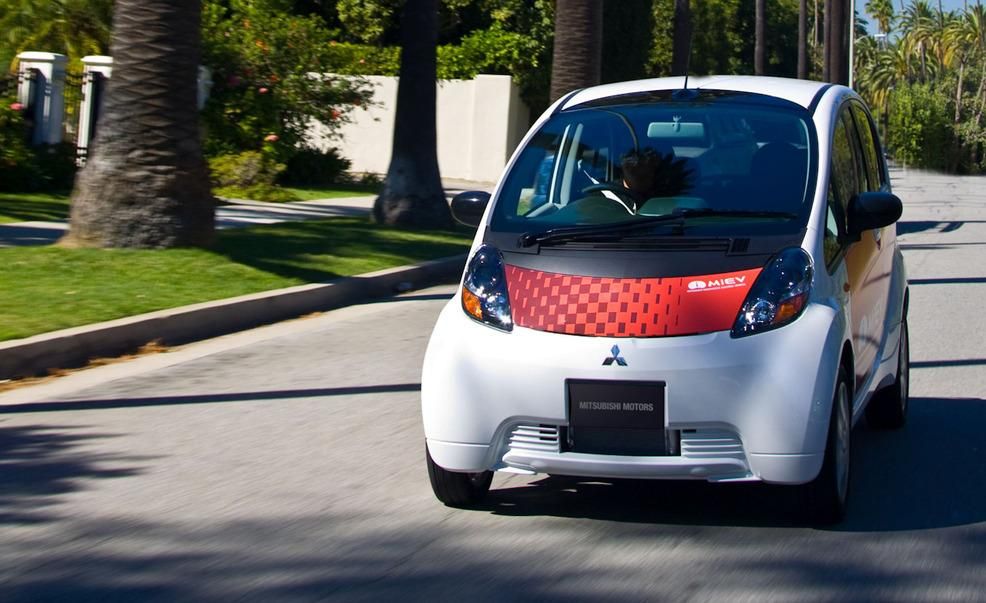
Of course, the feedback was generally positive because people did not expect much. The i-MiEV was powered by a 66 horsepower electric motor and a 16 kWh lithium-ion battery. Want speed? Sorry. Top speed was about 80 mph while range was a pretty modest 62 miles on a single charge.
Still, customers knew what they were in for. It’s hard to get riled up when expectations are so low to begin with.
Reliability-wise, the i-MiEV held up well, which is often the case with electric vehicles, where fewer moving parts generally means fewer problems. With that said, not all years are created equal and 2013 to 2015 models are best avoided.
2002 Mitsubishi Montero Sport
The 2002 Mitsubishi Montero Sport also earns its spot, even if it trails slightly behind the standard Montero in terms of overall reliability.
It’s still a strong, capable, and dependable vehicle. It may not quite match its sibling’s track record, but it offers other benefits—namely, a family-friendly size, more attractive price point, and arguably better off-road performance.
Its punchy 2.4-liter turbocharged engine and eight-speed automatic transmission provide the ideal balance of engine power, fuel economy, and smooth operation. It also features Mitsubishi’s Super Select II 4WD system, derived from the company’s rally-proven technology.
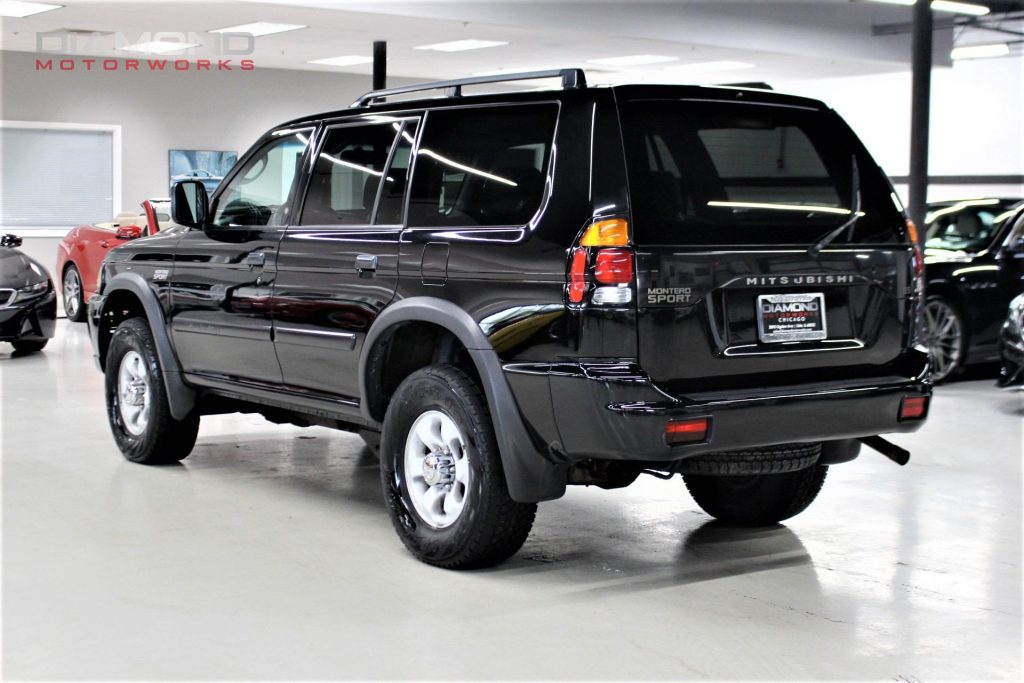
In 2015, the third generation was unveiled, equipped with modern features like a 7.0-inch infotainment system, leather-contoured seats, dual-zone climate control, optional third-row seating, and a hands-free powered tailgate.
Engine choices included a turbocharged 2.4-liter or 2.5-liter four-cylinder diesel and a 3.0-liter V6 petrol, paired with either a five- or six-speed manual, a five-speed automatic, or an eight-speed Toyota-sourced automatic transmission.
The Pajero/Shogun/Montero family is so well-regarded that it even secured a place on our list of the greatest Mitsubishis of all time.
2017 Mitsubishi Lancer
The 2017 Mitsubishi Lancer, produced from 1992 to 2016, earned recognition as one of the most reliable vehicles of the early 21st century.
Its predecessor, the Mirage, was known for being economical and offering great value, but Mitsubishi may have been wary of being pigeonholed as a brand focused solely on budget-friendly cars.
To break away from that perception, they expanded their vision with the Lancer, aiming to offer more space and comfort. While it was by no means a luxury sedan, it certainly represented a step up from what came before.
With the introduction of the ninth generation for the 2008 model year, the Lancer took another leap forward. The exterior received a sleeker design, while the interior was upgraded with features like automatic climate control and touchscreen navigation.

It also delivered more horsepower and improved handling, which contributed to its stronger appeal.
Although a few early issues cropped up, models from 2012 to 2015—and especially the 2017 version—proved to be dependable and well-rounded. A few gremlins surfaced early on, but for the most part, Lancers from 2012–2015 and 2017 are spot-on.
The 2017 model featured a 2.0-liter inline-4 gas engine producing 148 horsepower and 145 lb-ft of torque, with a manufacturer’s suggested retail price of $17,795 when new.
The Lancer also shares space in Mitsubishi’s legacy with other standout models like the Pajero, also known as the Montero in some markets and the Shogun in Britain.
2006 Mitsubishi Pajero/ Montero/ Shogun
The 2006 Mitsubishi Pajero/Montero/Shogun is widely regarded as one of the most dependable SUVs available on the used car market.
While both the Pajero and Pajero Sport have reputations for being reliable, the Pajero often holds the edge due to its longer production run and consistent performance over time.
Unlike many modern vehicles overloaded with electronic systems, older Monteros stick to a more mechanical setup, which makes them easier and cheaper to maintain. This simplicity is a big part of their long-term dependability, and it’s a trait that DIY mechanics appreciate.

Many high-mileage examples are still on the road today, with owners often reporting over 200,000 miles of use without encountering major issues.
That kind of longevity is largely thanks to the robust 3.5-liter and 3.8-liter V6 engines that powered the Pajero in its later years—both of which are known for their durability.
Among the various model years, the 2003 Pajero stands out as the best, followed closely by the 2006 version.
Unfortunately, Mitsubishi ended production of this iconic SUV in 2021, which has only increased nostalgia for the model and made it a natural fit for the ‘we wish they’d bring that vehicle back’ list.
2011 Mitsubishi Eclipse GS
The 2011 Mitsubishi Eclipse GS stands out as the best model year in the Eclipse lineup. It’s powered by a 2.4-liter inline-4 engine that generates 162 horsepower and 162 lb-ft of torque, delivering respectable performance for a sporty compact coupe.
The MSRP when new was $18,999. While the Eclipse remains a favorite for many enthusiasts, it’s not without its issues.

Some of the most commonly reported problems include faults with the manual transmission, a brake system that can be unreliable, and wheels that are known to be vulnerable to bending. Despite these drawbacks, it remains a solid pick in terms of reliability.
The Mitsubishi Eclipse Reliability Rating is 4.0 out of 5.0, which ranks it 20th out of 36 for compact cars. The average annual repair cost is $510, which means it has lower than average ownership costs.
2003 Mitsubishi Carisma
Alongside the Eclipse, the 2003 Mitsubishi Carisma earns a place on this list—even if it just barely qualifies in terms of the production window.
Produced between 1995 and 2004, the Carisma, along with its GT sibling, falls slightly outside the 20-year scope, but the rules have been bent a little to allow it in.
And rightfully so, as the 2003 Mitsubishi Carisma is a well-regarded model, considered by many to be a solid, dependable vehicle.
It also has the unique distinction of being closely related to the legendary Lancer Evo, essentially its twin in terms of platform. Thanks to the 25-year import rule, it’s now possible to bring one into markets like the United States.
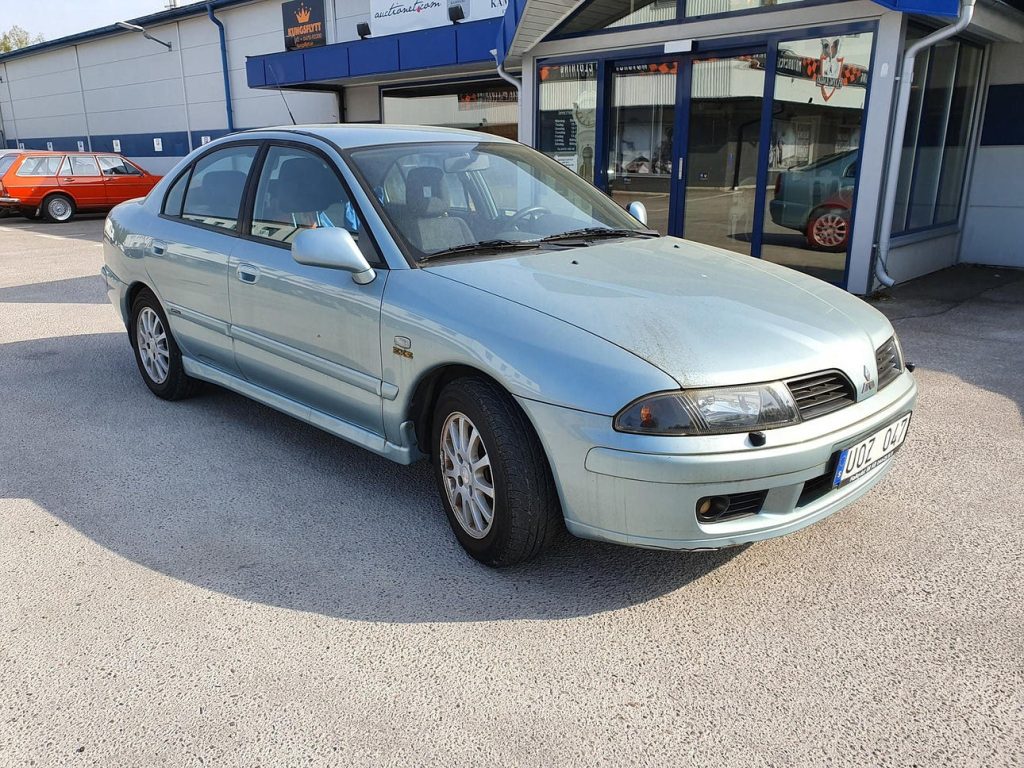
Designed as a large family car, the Carisma was the result of a joint venture between Mitsubishi and Volvo and was primarily built for the European market.
Its name is derived from the Greek word kharisma, meaning “divine gift.” More than 350,000 units were produced during its run. Owners frequently praise its fuel efficiency, spaciousness—making it ideal for family use—and overall reliability.
When browsing used car listings, it’s clear that the top-tier Carisma models are the ones fitted with the 1.8 GDI petrol engine, which delivers a great balance of performance, fuel economy, and dependability.
Meanwhile, the 1.9 DI-D diesel engine also deserves a nod for its impressive fuel-saving credentials.
2018 Outlander PHEV
The 2018 Mitsubishi Outlander PHEV is a strong choice among plug-in hybrid SUVs. It features a 2.0L inline-4 plug-in hybrid engine, producing 203 horsepower and supported by a 4WD drivetrain. When it debuted, it carried a manufacturer’s suggested retail price of $34,595.
We’ve said it before: there are a lot fewer parts in an electric vehicle so they do tend to be more reliable.
Not surprising, then, that one of the biggest problems — when there are problems — usually listed with the PHEV is with the battery system, which has been known to give reduced range or charging issues.
However, these problems are hardly common and the PHEV is still more reliable than many of its counterparts.
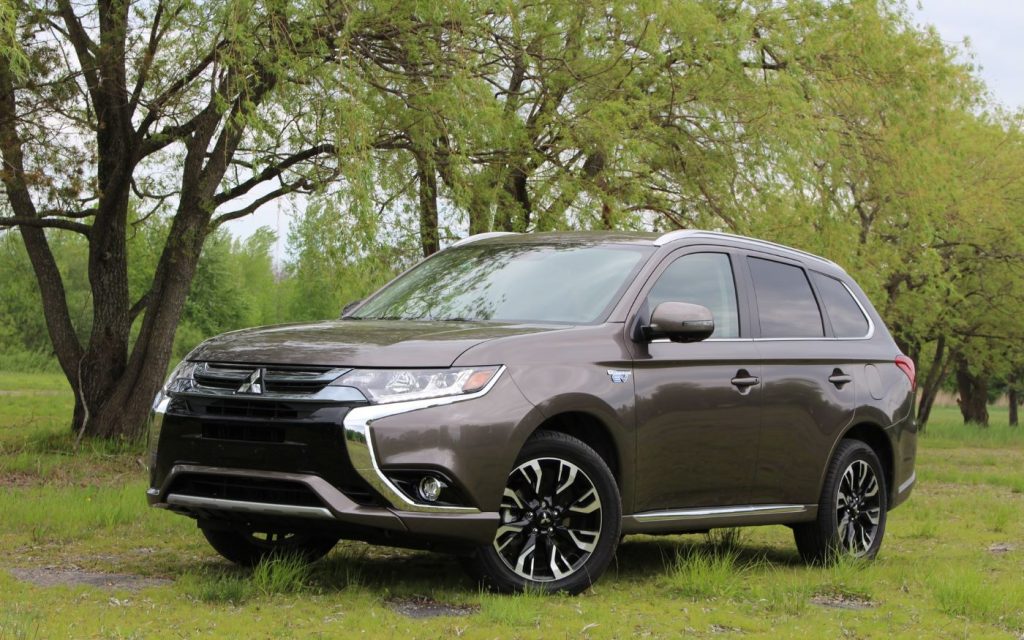
While all Outlander PHEV models offer consistent performance and dependability, the 2018 version stands out as the most practical option. It provides nearly all the benefits of the 2020 model but at a lower cost, making it a smart pick for buyers looking for value without sacrificing reliability.
2019 Mitsubishi Mirage
In a similar category of practical and affordable vehicles, the 2019 Mitsubishi Mirage deserves mention. Powered by a 1.2-liter inline-3 gas engine, the Mirage puts out 78 horsepower and 74 lb-ft of torque.
With a modest MSRP of $13,795, it’s one of the most affordable new cars in its segment. According to repairpal.com, a Mitsubishi Mirage will cost you, on average $457 per year in repair costs.
That’s about bang-on average for all vehicles in the subcompact car category, but way below the average for all vehicles. However, this figure is spread across all Mirage years. Get yourself a model from 2002, 2018 or the 2019 Mitsubishi Mirage, and you’ll be spending less.
Despite receiving lackluster reviews over the years, the Mirage still performed in the top third of its class. It has been described as unimaginative and coarse, but it was never intended to be flashy.
This is an economy car, after all. While it may not excite in terms of design or driving dynamics, it has proven to be a dependable and budget-friendly choice for many.
That said, not every year hits the mark, and if you’re looking to get the most out of your investment, there are a few years you’d do well to avoid—specifically the 2000, 2014, and 2015 models, which have been associated with more frequent issues.
2020 Mitsubishi Eclipse Cross
The 2020 Mitsubishi Eclipse Cross was introduced to the U.S. market in 2018, where it saw modest sales of just under 10,000 units, with numbers doubling in the following year.
However, the global pandemic interrupted the sales trajectory, and its long-term impact remains unknown. By 2021, around 50,000 units had been sold.
The reason we bring up the pandemic is because, as a result, there are fewer Eclipse Crosses on the road today, and fewer reports of faults and issues have emerged.
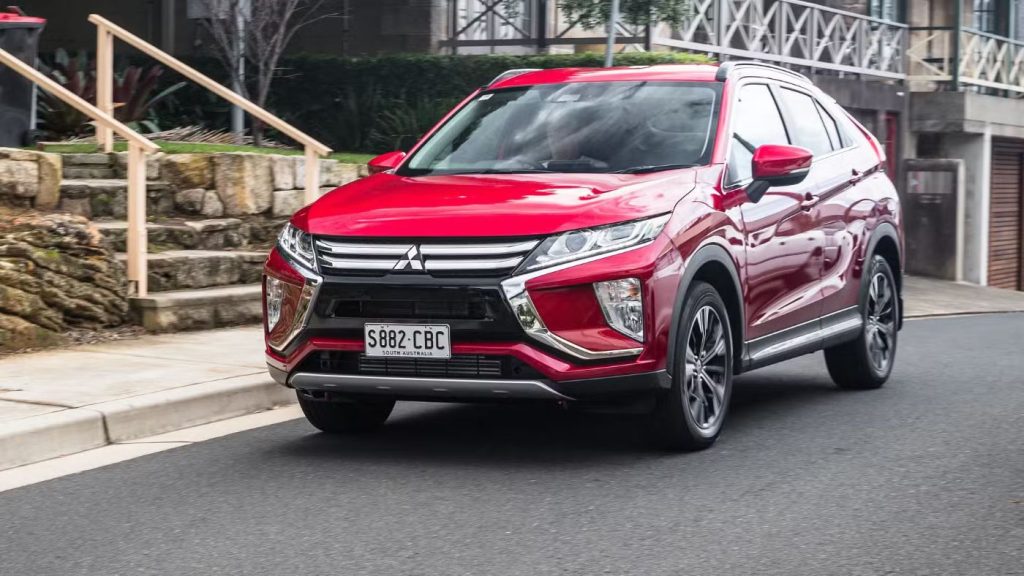
Consequently, the 2020 Eclipse Cross stands out as one of the more reliable vehicles in its category.
Though there were some problems with the earlier years of the Eclipse Cross, these were addressed in later models, and owners have praised the vehicle for its high-quality warranties, fuel efficiency, and the performance of its turbocharged 1.5L engine.
While the engine’s specifications may seem underwhelming on paper, it’s often reported to be stronger than expected.
2023 Mitsubishi Outlander
The 2023 Mitsubishi Outlander, on the other hand, is a reliable and durable SUV that stands out in its class. Equipped with a 2.5-liter inline-4 engine, the Outlander generates 181 horsepower and 181 lb-ft of torque, making it a capable performer both in traffic and on the freeway.
Priced at an MSRP of $27,895, it features Mitsubishi’s Super All-Wheel Control, offering enhanced traction, stability, and handling on various terrains.
The word “durable” may not be the most exciting term to describe a vehicle, but Mitsubishi uses it to emphasize the Outlander’s exceptional reliability.
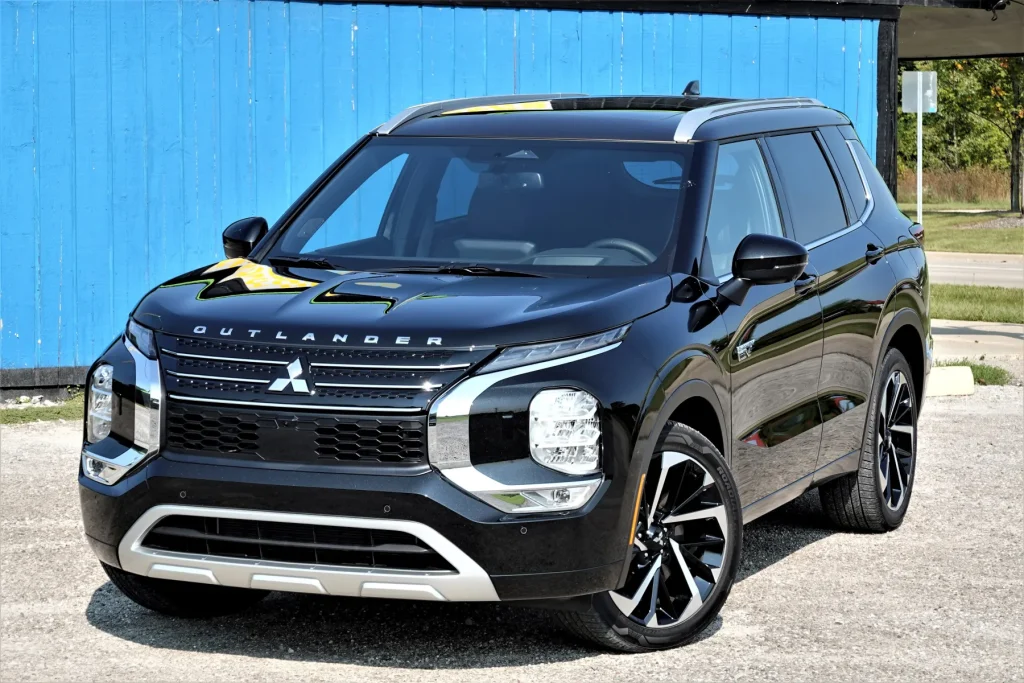
The 2023 Outlander is also loaded with safety features, making it one of the safest SUVs on the road.
It consistently ranks at the top of Mitsubishi’s lineup, and while models from 2011, 2014, and 2018 had their ups and downs, the 2023 model is top-notch, ranking in the top third among 26 compact SUVs in RepairPal’s reliability ratings.

